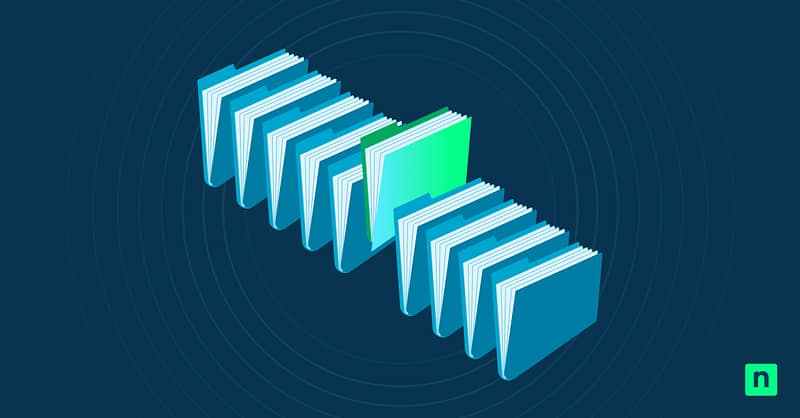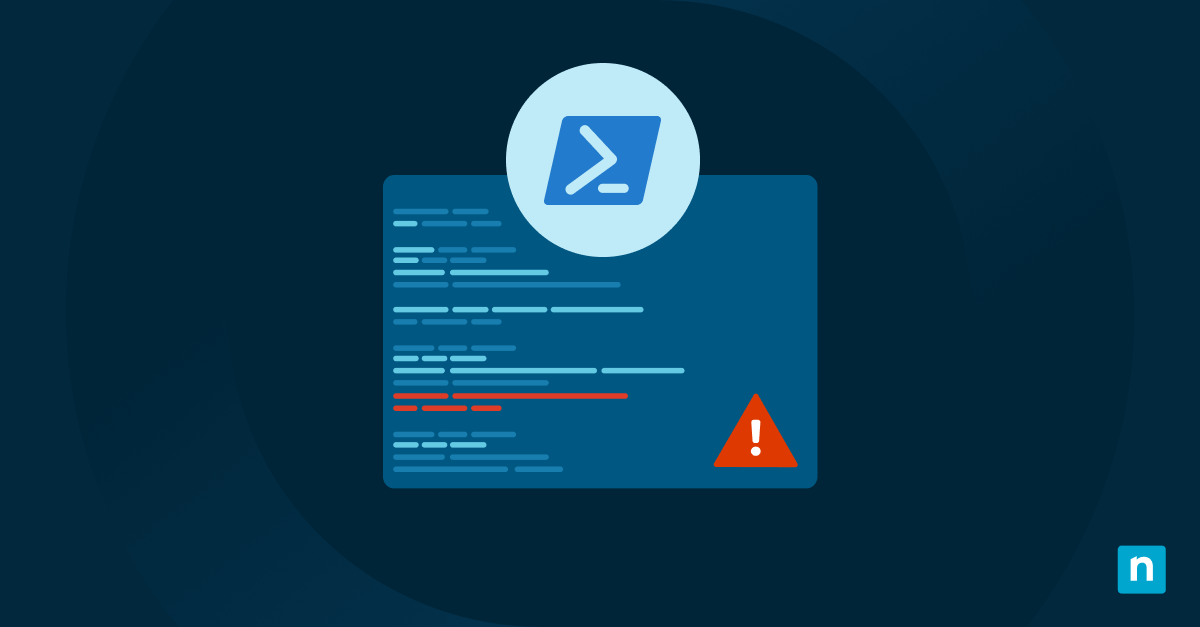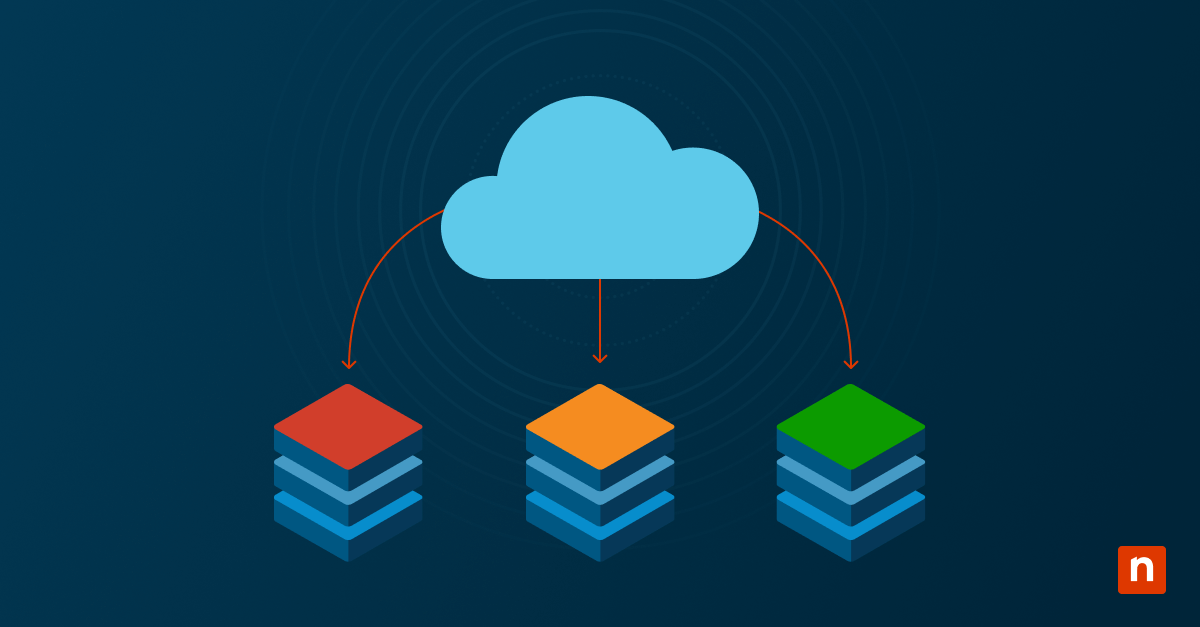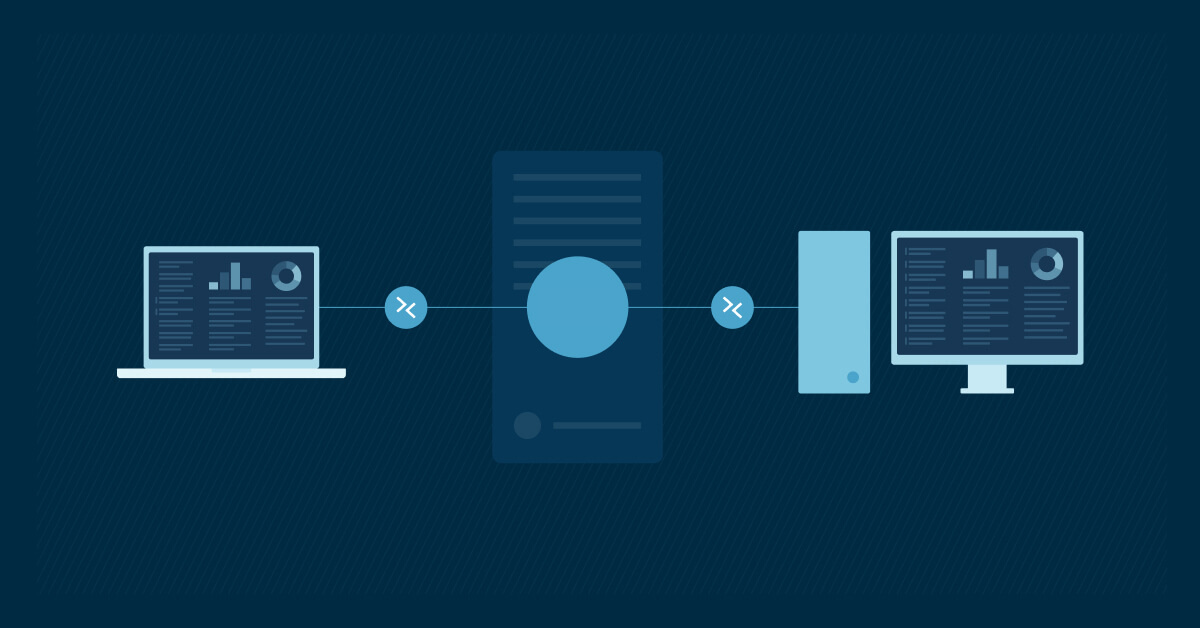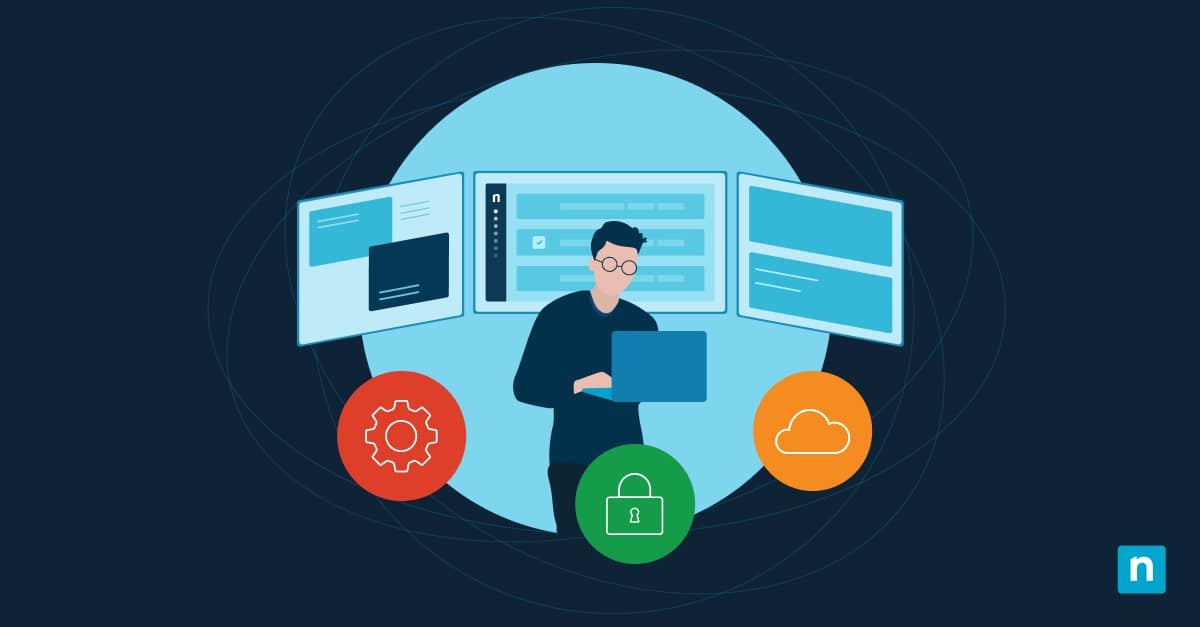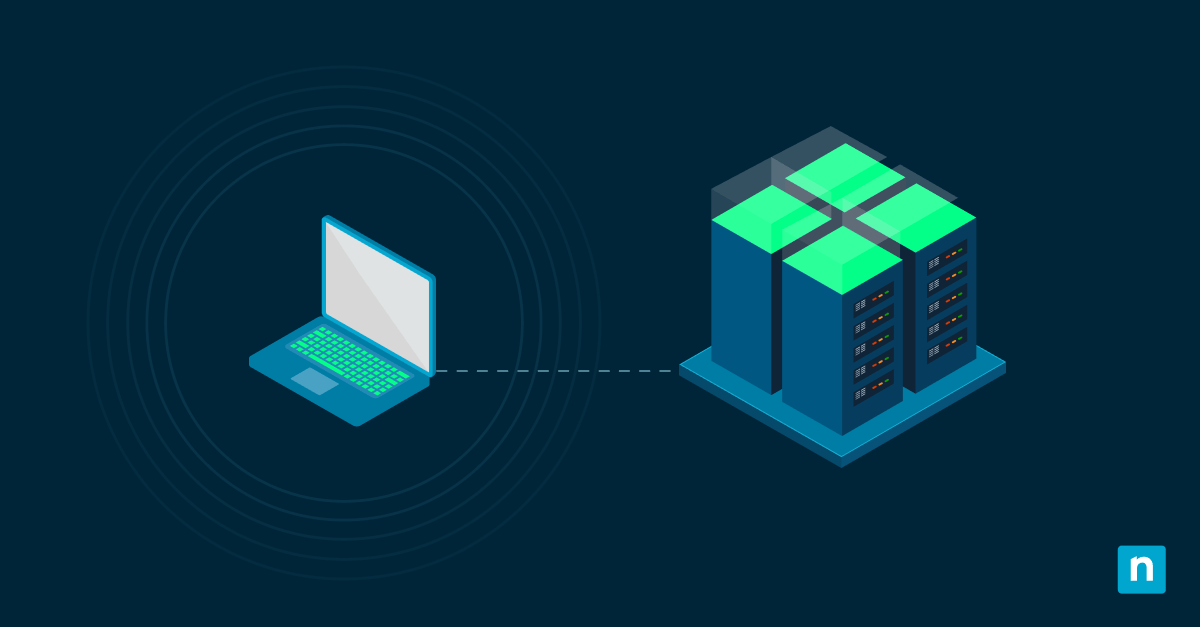Temporary files and stale user profiles are non-essential data that silently accumulate on a device. While they may seem harmless, these residual files and profiles can take up a lot of valuable disk space.
If left unmanaged for an extended period, they can create security risks in multi-user or shared workstation environments.
One way you can ensure all your endpoints stay lean and performing optimally is by automating cleanup.
Today, we’ll show you how to create automation scripts to clean up temporary files and old user profiles on remote machines.
How to automate temporary file and user profile cleanup with PowerShell
Cleaning up temp files and removing old user profiles is considered a routine task for MSPs. It helps keep systems running smoothly, frees up valuable disk space, and reduces security risks.
However, manually performing this on hundreds of endpoints is time-consuming, so most sysadmins use PowerShell scripts to automate the entire process.
Before we proceed, make sure the following requirements are in place:
📌 Prerequisites:
- Windows 10/11 or Server 2016+
- PowerShell version 5.1 or later
- Local administrator rights
- NinjaOne or other RMM tools for deployment and log retrieval (Optional)
- GPO access to enforce cleanup policies (Optional)
These are the primary tools you’ll need for this guide.
📌 Recommended deployment strategies:
| Click to Choose a Method | 💻 Best for Individual Users | 💻💻💻 Best for Enterprises |
| Method 1: Script temporary file cleanup with PowerShell | ✓ | ✓ |
| Method 2: Script old user profile removal with PowerShell | ✓ | |
| Method 3: Use Group Policy to standardize or complement the cleanup | ✓ |
Method 1: Script temporary file cleanup with PowerShell
📌 Use Case: Create a script that removes temporary files and user directories from an endpoint to reduce clutter and free up storage space.
Clean Windows and user temp directories:
| # System temp $systemTemp = “$env:windir\Temp” Get-ChildItem -Path $systemTemp -Recurse -Force -ErrorAction SilentlyContinue | Remove-Item -Force -Recurse -ErrorAction SilentlyContinue# User temp $users = Get-ChildItem ‘C:\Users’ -Directory foreach ($user in $users) { $tempPath = “$($user.FullName)\AppData\Local\Temp” if (Test-Path $tempPath) { Get-ChildItem -Path $tempPath -Recurse -Force -ErrorAction SilentlyContinue | Remove-Item -Force -Recurse -ErrorAction SilentlyContinue } } |
Make sure you exclude system accounts and active user sessions to prevent accidental data loss.
Method 2: Script old user profile removal with PowerShell
📌 Use Case: Deploy a script that identifies and deletes inactive user profiles based on their last login date.
A. Remove profiles not used in the last 30 days
| $cutoff = (Get-Date).AddDays(-30) Get-CimInstance -ClassName Win32_UserProfile | Where-Object { -not $_.Special -and $_.LastUseTime -lt $cutoff } | ForEach-Object { Remove-CimInstance -InputObject $_ } |
B. Check without removing
| Get-CimInstance -ClassName Win32_UserProfile | Where-Object { -not $_.Special -and $_.LastUseTime -lt $cutoff } | Select-Object LocalPath, LastUseTime |
Method 3: Use Group Policy to standardize or complement the cleanup
📌 Use Case: Apply Group Policy settings to enforce profile cleanup on system restart and standardize the process across devices.
- Open Group Policy Editor
- Navigate to: Computer Configuration > Administrative Templates > System > User Profiles.
- Enable the “Delete user profiles older than a specified number of days on system restart” setting.
- Set the value to 30 days.
💡Tip: You can use this alongside a PowerShell automation script to ensure system-level enforcement.
Additional steps for automating temporary file and user profile cleanup
Here are some additional steps you can take to make deleting temp files and old user profiles easier.
Method 1: Schedule cleanup with Task Scheduler
📌 Use Case: Create a scheduled task to run clean-up scripts automatically during off-peak hours to ensure system hygiene.
A. Create a scheduled task via CMD
schtasks /create /tn “AutoCleanup” /tr “powershell.exe -File C:\Scripts\Cleanup.ps1” /sc weekly /st 02:00 /ru SYSTEM
B. Validate the schedule
schtasks /query /tn “AutoCleanup”
Enforce a consistent cleanup schedule across all tenants for reporting and compliance.
Method 2: Log cleanup results to the Registry for RMM visibility
📌 Use Case: Log cleanup activity to the registry or local files to ensure your RMM tool can monitor, report, and audit them.
A. Create audit key and store metadata
| New-Item -Path “HKLM:\SOFTWARE\Org\CleanupAudit” -Force Set-ItemProperty -Path “HKLM:\SOFTWARE\Org\CleanupAudit” -Name “LastCleanupDate” -Value (Get-Date).ToString(“u”) Set-ItemProperty -Path “HKLM:\SOFTWARE\Org\CleanupAudit” -Name “ProfilesRemoved” -Value 3 Set-ItemProperty -Path “HKLM:\SOFTWARE\Org\CleanupAudit” -Name “TempFilesDeletedMB” -Value 512 |
B. Query via CMD
reg query HKLM\SOFTWARE\Org\CleanupAudit
This way, your RMM tool can have a data point for monitoring and alerting.
⚠️ Things to look out for
Keep these pitfalls in mind when following our guide:
| Risks | Potential consequences | Reversal |
| Removing system account temp files | Service failures or system instability | Use a whitelist to exclude known system accounts. |
| Running scheduled tasks without proper permissions | Script will fail silently or throw errors | Run tasks under SYSTEM or with full admin rights. |
| Files not removed due to permission issues | Partial clean up | Look for locked files or inherited permissions from another user. |
| Scheduled task not running due to misconfigurations | The cleanup will not occur | Verify the script path, syntax, and system settings. |
| GPO is not applying to the target behavior | Inconsistent cleanup behavior across devices | Use gpresult /h report.html to verify Group Policy inheritance on all endpoints. |
| Applying cleanup policies without testing | Accidental data loss and system errors | Test scripts and Group Policy settings in a staging environment before rolling them out. |
Best practices for automating user profile and temporary file cleanup
To make sure your scripts run smoothly on different environments, follow these practical tips:
Check for active user sessions before deleting profiles
If you skip checking for active user sessions, you may delete an account that’s still in use and interrupt someone’s workday.
To prevent this, use quser on CMD or Get-Process -IncludeUserName on PowerShell to check if a user is still logged in.
Exclude service accounts or shared logins from cleanup
Deleting accounts used for background services or shared among multiple users can disrupt automated tasks.
As a solution, exclude service accounts from the cleanup using a whitelist array.
Protect recent user profiles from being deleted by using conservative age thresholds
Just because a profile hasn’t been used in a while doesn’t necessarily mean it’s no longer needed. Some user profiles are created for temporary use, such as for remote staff or executives.
Setting a generous threshold (e.g., 60 or 90 days) when identifying stale profiles will help you avoid accidentally removing valid accounts.
Regularly rotate logs for traceability and storage management.
Create summaries of your cleanups in local files or network shares to make troubleshooting easier. These logs should include the number of temp files and user profiles your script has removed and when.
In addition, you need to rotate your cleanup summaries to save disk space. You can do this by archiving or deleting older logs.
How NinjaOne simplifies remote temporary file and profile cleanup
NinjaOne makes keeping remote endpoints clean and healthy easier by:
- Deploying and scheduling cleanup scripts across endpoints.
- Tracking registry keys for the last cleanup and the deleted profile count.
- Alerting on missed cleanup windows or script failures.
- Tagging devices for health check remediation based on their disk usage.
- Generating reports across tenants for cleanup coverage and success.
With NinjaOne, MSPs can automate endpoint hygiene at scale and monitor real-time results from multiple client bases using a single dashboard.
Improve endpoint hygiene with automated profile and temporary file clean-up
Automating the removal and cleaning of temp files and old user profiles is a smart move for any MSP. It takes the manual work out of maintaining hundreds of endpoints and ensures consistent system performance across multiple client environments.
By implementing scheduled clean-ups, you can proactively prevent issues like sluggish system behavior and disk space shortage.
Related topics:

